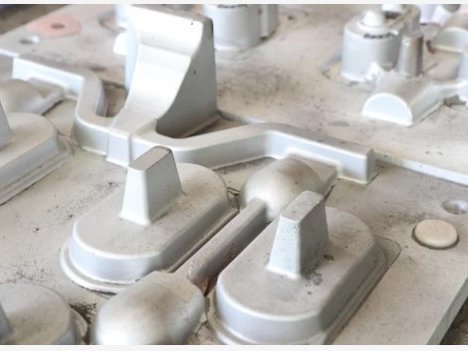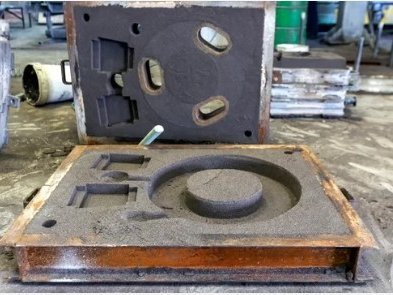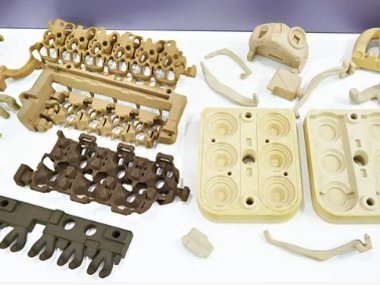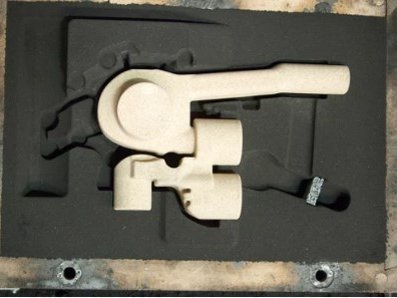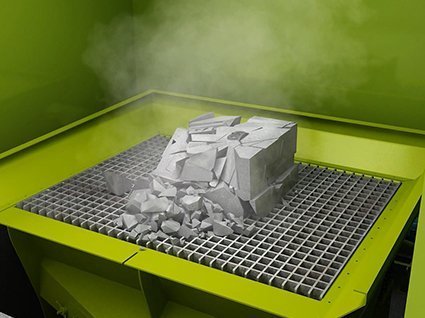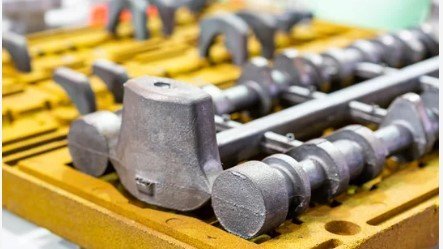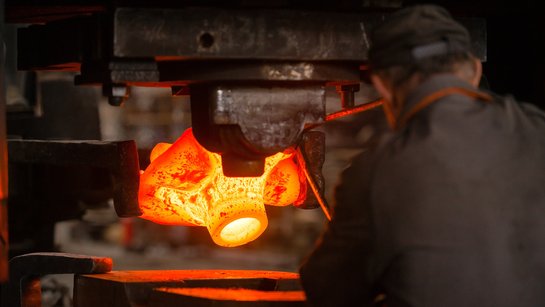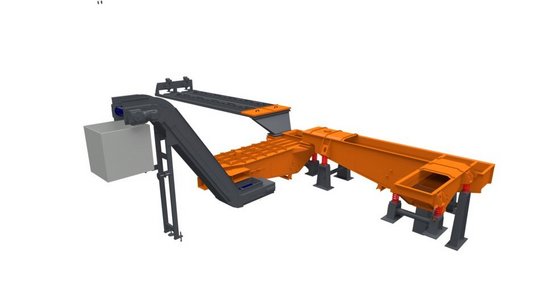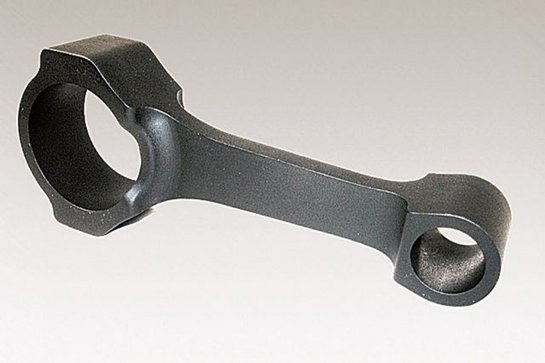
Sand casting is used to form 60 percent of all metal castings. Tailored shot blasting applications help remove sand and prepare workpieces for safe, subsequent processing.
Our Forge and Foundry Series continues with a deeper look at sand castings. While more than 60 percent of all metal castings are made with a sand casting process, the specific shot blasting machines used to remove surface contaminants vary. Rosler is uniquely qualified to identify the right shot blasting machine for your process and can help determine what settings and media will produce the best results with every cycle.
Sand Casting Basics
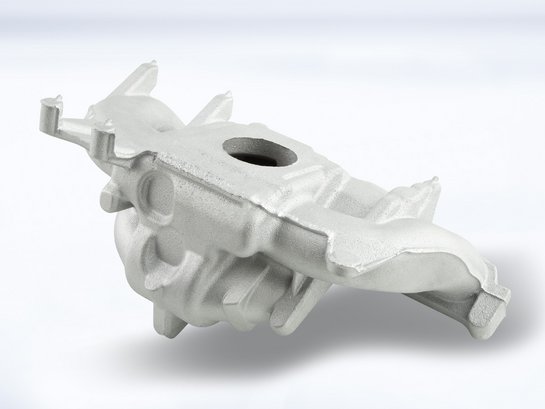
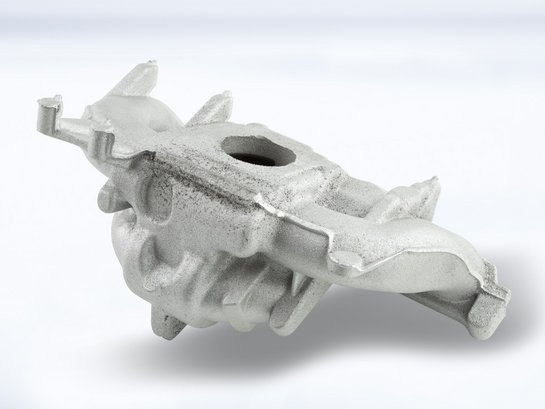
Sand casting, also known as sand molded casting, is a metal casting process using various kinds of sand as mold material. The sand is usually “glued” together with a bonding agent like clay, water, oil, resin, or sodium silicate.
A sand mold consists of two or more sections. Liquid metal is poured into the cavities formed by the mold.
Once cooled, sand molds pass through a shakeout device, where they are destroyed to extract the metal castings. The raw castings then undergo a fettling procedure, where sprews, gates, runners, and risers are separated, and coarse burs are removed.
The actual castings still contain surface contaminants in the form of adhering molding sand, sand cores, and scale/rust (oxidized metal) which must be completely removed before they can undergo downstream manufacturing operations like machining, surface refinement (edge radiusing, smoothing, polishing) coating, or painting.
Leaving these contaminants on the castings would make downstream operations very expensive or outright impossible by, for example, destroying milling tools and drill bits, quickly polluting coolant systems, and preventing coatings and paint from adhering to the component surface.
Efficiency of Shot Blasting

Shot blasting is the only surface treatment method for cleaning sand castings due to its versatility, high productivity, and cost efficiency. It is excellent for all-around de-sanding, descaling, de-rusting, and even light deburring.
Shot blasting can manage practically any part, from the smallest to the largest, irrespective of weight and shape. Its efficiency goes beyond cleaning to produce surface texturing/roughening as preparation for coating and painting as well.
Shot peening will increase the service life of critical components exposed to tensile and bending stress.
Turbine technology is the predominant blast system used for foundry applications. The large blast pattern of turbines allows effective cleaning of huge workpiece surface areas in a highly productive and cost-efficient manner.
Air and wet blasting are primarily used for special applications like shot peening or blast cleaning of very delicate parts with thin walls.
While Rösler offers versatile and adaptive mass finishing, these machines are used primarily as a surface refinement technology for deburring, defined edge radiusing, surface smoothing, polishing, etc. Theoretically, mass finishing could also be used for cleaning of raw sand castings, but it would be terribly slow, cost-prohibitive, and only useful with small- to mid-size castings.
Automated Operation

Fully automatic and flexible integrations of shot blasting machines for sand castings such as the RHBD 22-27-F machine can be seamlessly integrated into existing manufacturing systems. Created specifically to process counterweights for forklifts, this continuous hanger shot blast machine reduces the need for manual intervention while expediting the finishing process.
After raw castings are deposited in a staging area in front of the blast machine’s inlet chamber, an operator manually positions the castings and prompts the system to transport the work pieces through the shot blasting chamber. Trolleys on a power and free work piece transport system pick up and carry the work pieces through the different machine sections, including the inlet, blast, and outlet chambers according to predetermined indexing time intervals.
The system also includes a return system for sand left on the staging area after manual positioning.
Both collections of sand and debris as well as any sand and blast media from the outlet chamber are transferred to the central screening hopper below the blast chamber where sand clumps, burrs, and metal flashings are separated, transferred to a sturdy Z conveyor belt, and discharged from the machine.
The remaining sand/media mix is transported to an elevator and into a highly efficient media cleaning system. Consisting of a dual-stage magnetic separator and an air wash system, the media cleaner ensures high cleaning efficiency, guarantees trouble-free operation, and minimizes wear and tear on the shot blasting machine.
